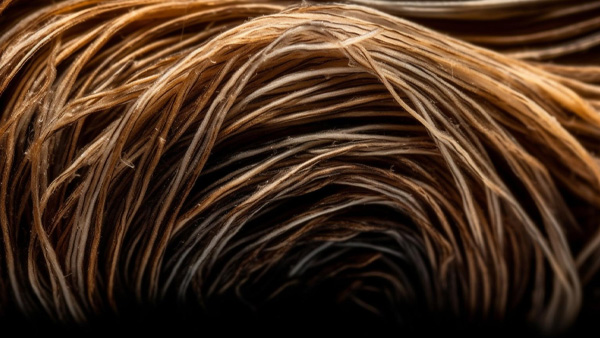The idea of natural fibres is slowly becoming a prominent phenomenon all across the world and the arecanut sheath fibre is one such blessing, which has emerged as an unbeatable component for the textile industry. The leaf sheath of areca nut consists of many constituent materials like cellulose, hemicellulose, lignin and pectin etc. Long staple fibres can be extracted from areca nut leaf sheath by alkali treatment.
Unique aspects of this fibre
Arecanut leaf sheath fibers contain the highest amount of cellulose than the other fibers. Aqueous extract, fatty and waxy matters, pectic content and hemicelluloses content of coconut stem fibers are the highest. These properties help enhance the strength of the stem. This makes it a suitable component for clothing.
What’s the chemical constitution of this fibre?
It is observed that areca nut leaf sheath fibre contains 56.8 per cent cellulose, 22.4 per cent hemicelluloses and 6.3 per cent lignin, respectively. It is verified that strength and initial modulus of lignocellulosic fibres depend on the crystallinity index and microfibril angle. Higher crystallinity index and lower microfibril angle increase the mechanical properties of cellulosic fibres. It is observed that the crystallinity index and microfibrillar angle of areca nut leaf sheath fibre are 56.5 per cent and 35.2 per cent, respectively.

Being natural fibre areca nut leaf sheath fibre contains hydrophilic -OH group in their molecules. The water molecules present in atmosphere attract to hydrophilic groups of fibre and form hydrogen bonds. It is observed that moisture content of areca nut leaf sheath fibre is 11.9 per cent.
The cellulose content and crystallinity index of areca nut leaf sheath fibre is around 56.8 per cent and 56.5 per cent, respectively, which is comparable to commonly available lignocellulosic fibres such as cornhusk, jute, coir etc. The fibre diameter is 54.8 µm, which is comparable with commonly available natural fibres. The overall fibre properties of fibre recommended that the fibre may be useful for textile, reinforcement in polymer composites and pulp and paper making application purposes.
Even though there are numerous natural fibers known to mankind, the bulk availability of natural fibers like cotton, jute is available only after cultivation. But few fibers are available as agro-waste. Here areca nut fiber, a large quantity of areca nut fiber is discarded once the nuts are separated. In view of this and the consideration to find an alternative natural fiber that would not add to the pollution. It was essential to experiment and find solutions to convert the areca nut fibers into usable products that could be used daily. How does it become indispensable for the textile industry?
Arecanut leaf sheath (ANLS) an unexplored agricultural biomass is used to recover long staple lignocellulosic fibers. A long staple lignocellulosic fiber is extracted from ANLS biomass using 8% NaOH treatment. As reinforcing material ANLS fibre properties such as fibre length, diameter, moisture content, single fibre strength and X-ray diffraction analysis were carried out. Three types of composites, 15, 20 and 25 (w/w)% fibre loading composites have been prepared in unsaturated polyester resin matrix. The tensile, flexural and interlaminar shear strength (ILSS) properties and void content of these composites are studied. The tensile fracture behaviors of fibre and composites are studied with the help of scanning electron micrographs.


